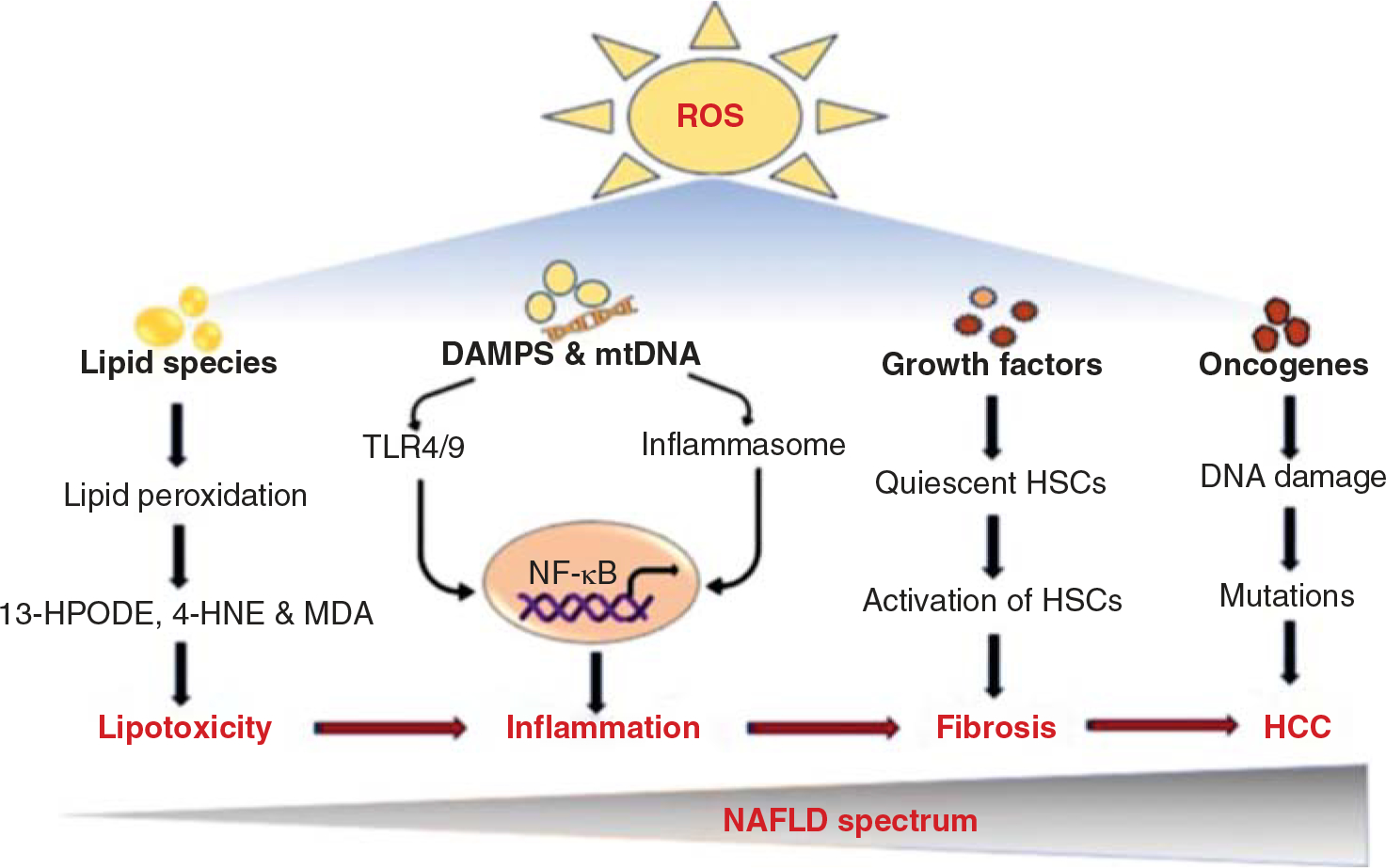Figure 4.

The mechanisms of ROS-induced oxidative stress in the pathogenesis of NAFLD. ROS can oxidize stored lipids through the process of lipid peroxidation, releasing lipid peroxidation reactive aldehydes, which result in lipotoxicity. Lipotoxicity involves in the production of several hepatic inflammatory mediators. ROS also increases the production of danger signals and mtDNA stimulating the innate immune system and inflammatory cytokines to promote liver inflammation. ROS-associated lipid peroxidation and cytokines contribute to the inflammatory cell infiltrate. On the other hand, ROS-mediated oxidative stress is a feature of liver fibrosis that activates HSCs by releasing several profibrotic stimuli and growth factors such as TGF-β, leptin, AGEs, and PDGF. Further, ROS induces DNA damage, resulting in cancer cell transformation.
